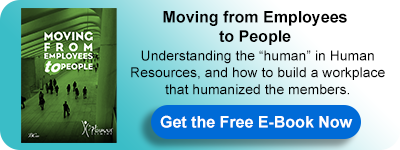Human Resources: The Evolution
When employees view themselves as humans with the right to choose and voice out fears and opinions, organizations need to support them with a safe environment that allows them to exercise their humanity. Organizations and employees have evolved tremendously, and what was suitable decades ago is no longer ideal in the 21st century.
Labor Relations in the Beginning
During the Industrial Revolution in the early 1900s, business leaders tended to treat employees as interchangeable and so expendable. When disagreements developed, mediators stepped in to help resolve issues, while large companies frequently dismissed workers who demanded higher pay or better working conditions.
Negotiating and executing collective-bargaining agreements with unions and offering training, support, and guidance to managers and supervisors on labor matters are all part of a company’s employee-relations job today.
Developing Workplace Relations
Workers’ rights and legal rights emerged after World War I in the 1920s, as tensions between employers and employees grew. This field focuses on advancing scientific knowledge, problem resolution, and ethical dilemmas.
Since many workers and businesses labored for lower pay to assist the war effort, labor discussions for higher compensation resulted in more strikes and clashes with employers. Because there are fewer unions today, most businesses do not have an industrial relations department.
Growth of Personnel Administration
Personnel administration in the 1940s focused on efficiency improvements following World War II. To satisfy guaranteed government contracts, many enterprises exploited low-skilled labor to manufacture war materials (rather than consumer goods that might or might not have been purchased).
This job arose in the 1960s to assure legal conformity. Recruiting, hiring, training, and evaluating employees were all part of the job. Companies are at risk if they do not follow regulations. To avoid this, personnel administrative responsibilities centered on completing paperwork.
Creation of “Human Resources”
Human resource management in the 1980s involved using new theories on change management, motivation, and team building. Many corporations underwent mergers and acquisitions during this time. This resulted in a greater focus on staff optimization. Additionally, the usage of computers has resulted in the development of automated procedures and Web-based human resource management systems.
Joining Organizational Management
HR and company strategy must be aligned for successful human resource management. Currently, HR departments give more attention to hiring the proper people, educating, developing the workforce, and managing performance rather than transactional personnel administration activities. HR will consider using full-time employees vs. contractors and recruiting outsourced labor vs. in-house staff, depending on the company’s profit model.
To attract people eager to work for socially responsible firms, HR departments are now involved in developing recruitment and retention strategies, management training programs, succession planning, and making the company an employer of choice.
It is evident that HR is evolving in order to accommodate employees and organizational needs within the new era. Hence, the demand for restorative practices ensures a humanistic approach, especially with change happening at a high rate with technological changes and organizations competing for talents. The more organizations provide a positive environment that appreciates human beings, the more they are attractive for talents and their retention.
For more about this topic, download our latest book "Moving From Employees to People" for FREE:
